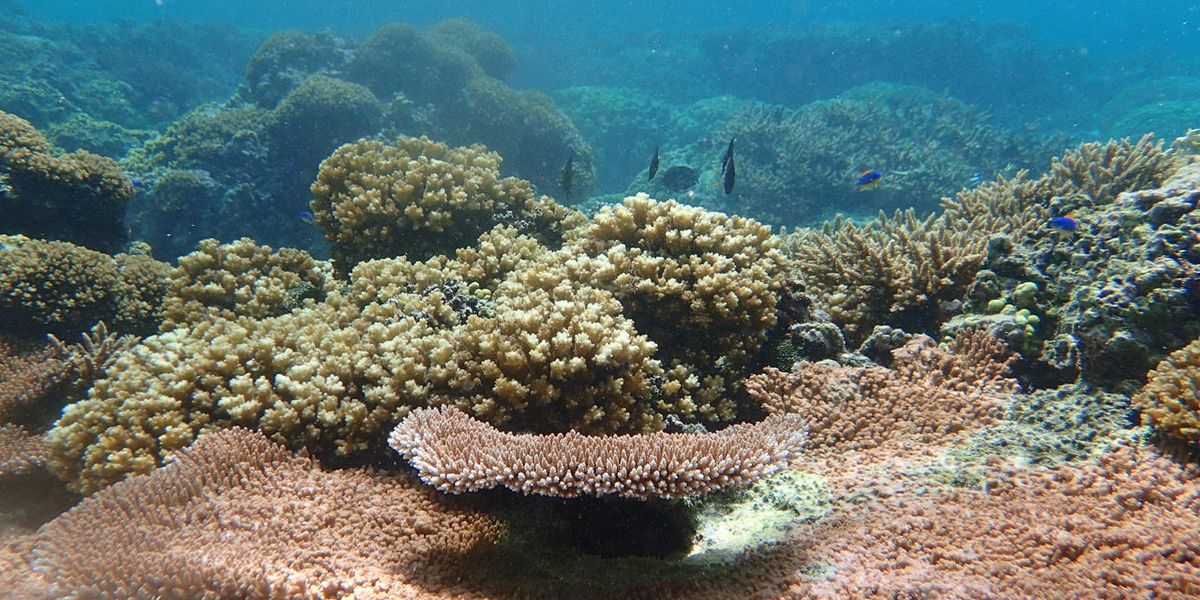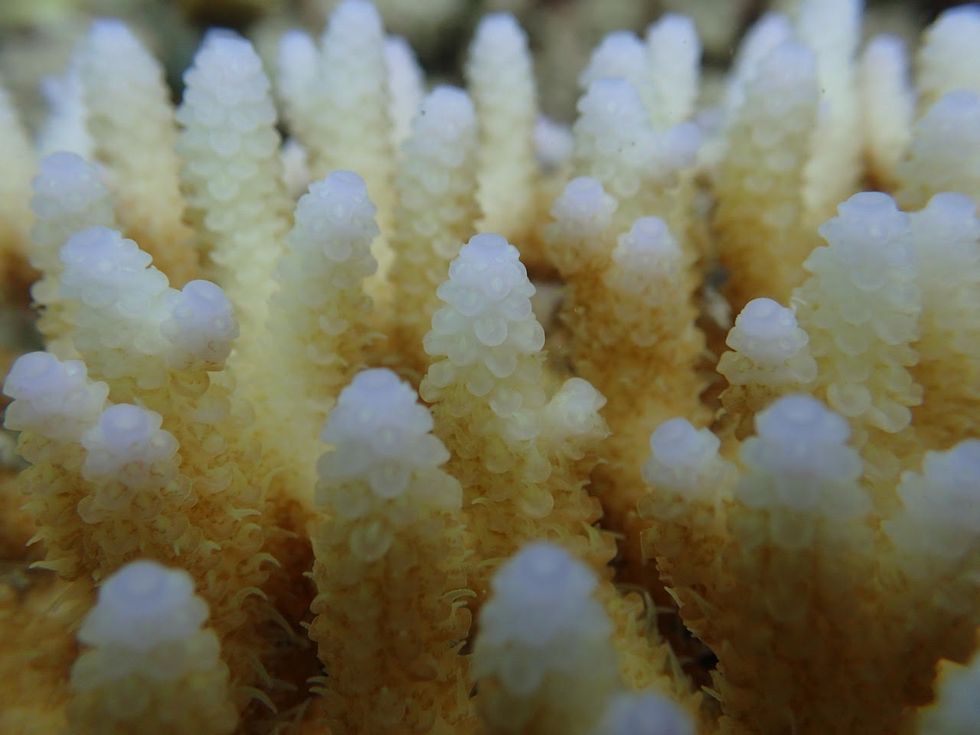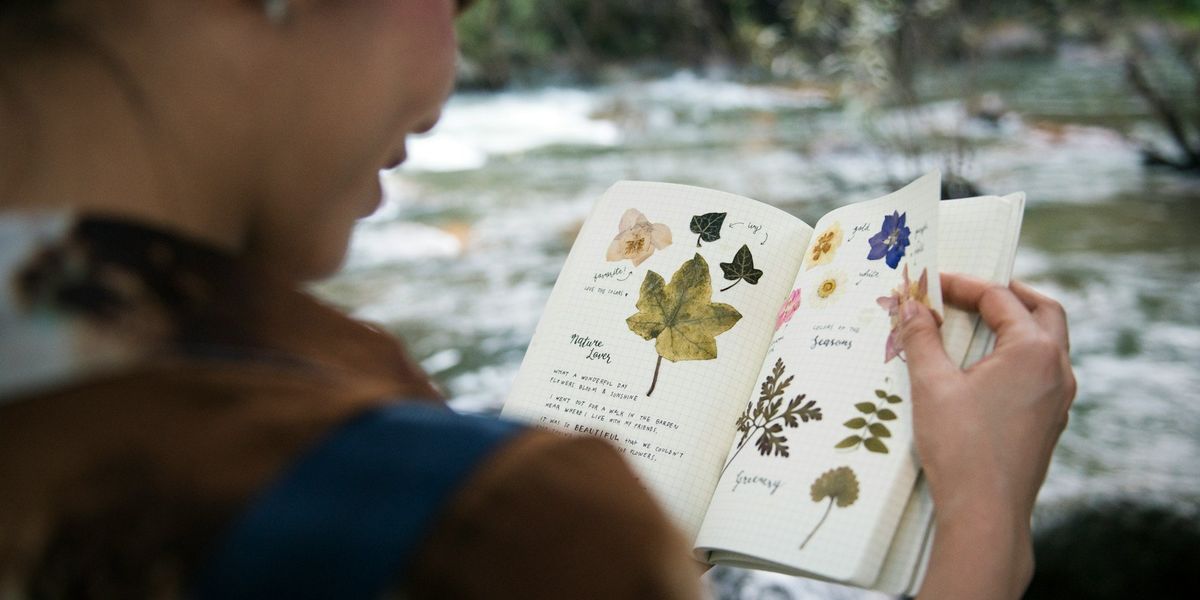
“A friend is gone:” Handpicking hardy corals to save them from warming waters
As warming waters and acidification threaten corals around the world, scientists are gathering clues to save the charismatic colonies and bolster biodiversity
When Steve Palumbi and a group of scientists arrived in American Samoa in 2017, they saw a grim scene. Acropora hyacinthus, a charismatic coral shaped like large plates, was dying out.
Some of the researchers had known the dying corals on an individual basis for years. Palumbi first visited American Samoa in 2008, after learning about a lagoon with particularly warm waters. Despite balmy temperatures reaching up to 95 degrees Fahrenheit, the lagoon harbored a thriving coral reef. Palumbi, a marine biologist at Stanford University, wanted to check it out.
The trip began a decade-long project to study the coral reef in the lagoon, which is located off the island of Ofu, a tiny island in the Pacific Ocean about 2,500 miles from the Australian coast. The Palumbi lab monitored and mapped the corals.
"We followed a hundred corals every month for the last 10 years," Palumbi told EHN. "We could sit around in our lab in California and talk about individual corals."
But in 2015 and again in 2016, El Niño heated up oceans far and wide—the phenomenon spanned from South America to the middle of the South Pacific Ocean, where the smattering of islands and atolls that make up American Samoa are located. Warm temperatures wreak havoc on corals—and can eventually destroy entire reefs.
While Acropora hyacinthus recovered from El Niño in 2015, a second episode proved too much. This time, 85 percent of the colonies had been wiped out.
"One of my favorite corals, AH-93, grew up to be about a meter across and then died," Palumbi said. "I have this very sad picture of AH-93, totally stark white dead. It's like, wow, a friend is gone."
But in the wake of this disturbance, Palumbi and a group of scientists are learning valuable details about how coral reefs cope with rising temperatures from natural events like El Niño, which are predicted to intensify with global climate change. Recent work from the lagoon shows that corals—across species and among individuals within a species—can react to heated waters very differently. As reefs deteriorate across the world, biologists hope to find reliable ways to handpick hardy individuals to replant in destroyed reefs, which could help brace corals for climate change.
Such solutions would be timely and crucial. Between 2014 and 2017, elevated temperatures put three quarters of the world's reefs at risk for bleaching. In the future, scientists expect bleaching to intensify and happen more often.
Coral reefs cover only a small fraction of space, but about a quarter of fish in the ocean rely on them. Reefs are also important for people: without their protection, coastal communities would take the brunt of storms and strong waves. By some estimates, more than 450 million people benefit from fisheries, tourism, materials and protection provided by the reef.
"What we lose are the ecosystem services that literally millions of people depend on," Megan Morikawa, who completed her PhD in the Palumbi lab, told EHN.
Friendly algae, tough parents

Time series for a coral in Samoa bleaching then recovering. (Credit: Megan Morikawa)
Despite their appearance, corals are not plants (or rocks!). Instead, they are many tiny animals living together as a colony. Corals also maintain a symbiotic relationship with certain species of photosynthetic algae. In exchange for a safe place to live, the algae produce food for the coral.
But events like El Niño put corals under dire stress. In a last ditch effort to survive, a stressed coral will eject its algae, causing the coral to bleach bone white. Corals sometimes recover after bleaching. Other times they do not. Turf algae, not the symbiotic kind, rapidly covers a dead coral's skeleton.
"The coral turns from tan to white, to gooey," Palumbi said.
The Palumbi lab and collaborator Luke Thomas, a researcher at the University of Western Australia, detailed the loss of Acropora hyacinthus last month in the journal of Molecular Ecology. They measured bleaching and deaths in both A. hyacinthus and another closely related species, Acropora gemmifera, which looks like spiraling stalks of Romanesco broccoli.
Both species made full recoveries in the wake of the 2015 El Niño. But two years later, the results were different: as A. gemmifera made another strong come back, most of the A. hyacinthus died out.
While previous work lumped the two corals together, "I think this paper shows that genus levels of generalizations are not appropriate," Thomas told EHN. "There are species within these thermally sensitive groups that are pretty tough."
Both species belong to the genus Acropora, the largest group of corals and one that is known to be especially sensitive to heat.
"Normally people consider the Acropora to be the first to go...because they're so widespread and abundant, it's a bit of a worry," Thomas said. But, "even within a thermally sensitive group, some can recover."
In another study published last February in the Proceedings of the National Academy of Sciences, Palumbi and then-PhD student Morikawa uncovered possible shortcuts for identifying corals that can take the heat.
First, they measured heat resistance in four species of coral (including A. hyacinthus and A. gemmifera), sampling from two distinct pools: one pool heated up and fluctuated temperatures more often, the other stayed milder. In 2014, they extracted fragments from the corals and planted them on another reef less than two miles away.
As the 2015 and 2016 El Niño toasted waters in the Pacific, the researchers monitored the new corals. Thanks to previous work, they knew that corals adjusted to warm waters over time. But they wanted to know how much of acclimatization was inherited and how much was only temporary.
Did tough parents make tough offspring, even when that offspring relocated to a kinder environment?
What they found was promising. Compared to their parents, the corals lost some of their heat resilience after moving to the new reef. But they didn't lose all of it. Two main factors determined how the corals fared. Parents from the first pool, the one with the more variable temperatures, produced more robust offspring. And if a coral harbored certain species of symbiotic algae, it was also more likely to withstand heat.
Both indicators, algae and origin of the parent, applied to corals in all four species. It implies that similar proxies could reveal hardy corals in other reefs. But what does this mean for coral reef restoration?
"Who you choose matters"

A close up of coral with pale tentacles after bleaching. (Credit: Stephen Palumbi)
Across the world, reef managers are selecting corals to grow and replant on destroyed reefs. An array of institutions in the U.S., including the National Oceanic and Atmospheric Administration and the Coral Restoration Foundation, manage coral nurseries off Florida and in the Caribbean. Groups like the Reef Restoration Foundation, who work on the Great Barrier Reef, run similar projects abroad. After growing in a nursery, corals can be replanted on degraded reefs.
But, as Morikawa says, "who you choose matters."
Normally, as rising temperatures wipe out some individuals, the reef is automatically left with heat-tolerant survivors. But when it comes to rebuilding reefs, it would be helpful to identify hardy corals beforehand.
"We don't really have any sort of biomarker, some sort of dipstick test or a genetic assay that would tell you this coral is more tolerant than the other," Carly Kenkel, a coral reef researcher at the University of Southern California, who is not involved with the research at Ofu, told EHN. "In the absence of that, picking a diversity of [heat] tolerances is probably your best bet."
Some research shows that selecting six to 12 individuals from a given species is "enough to saturate genetic diversity," Morikawa said. But choosing the wrong individuals to start with, she said, can hinder the success of a restoration project down the line. Variety in the gene pool is important—it increases the chances of corals being able to adapt to changes in the future.
If other reefs are like the one at Ofu, reef managers may be able to develop tools to predict the climate winners ahead of time. One idea is to extract corals and put them in a stress tank in order to measure their heat tolerance. Taking it a step further, it might be possible to identify winners by measuring the microclimates of existing reefs. Corals that live in fluctuating temperatures, Morikawa said, "have also been selected to survive in higher temperatures."
"To be successful, such predictive tools should work across species, be simple, inexpensive, rapid and deployable in remote locations," she said.
Chris Langdon, a coral reef researcher at the University of Miami who is not involved with the research at Ofu, said identifying heat-tolerance in local corals "is one of the more feasible approaches," compared to genetic engineering or transplanting corals from far-off reefs.
He notes that this research focuses on rising temperatures, which is only one threat to corals. Another threat is acidification: as seawater absorbs carbon dioxide, the ocean becomes more acidic and calcium carbonate, the mineral that corals use to build their skeletons, becomes less available.
The next step in the research is to see if similar indicators actually apply in other places. Recently, the researchers at Ofu have dispersed to other reefs around the world. The Palumbi lab moved to Palau, an archipelago in Micronesia, and began monitoring 30 patches of reefs two years ago.
"We have our first maps of heat-tolerant corals in Palau," Palumbi said.
Meanwhile, Megan Morikawa now works as the Director of Sustainability at Iberostar Group, a hotel and resorts chain that recently invested in a new coral lab and underwater nursery in the Dominican Republic. The lab is equipped with a control system to recreate bleaching events, to help answer similar questions that researchers had in Ofu.
Thomas, the researcher at the University of Western Australia, works at Rowley Shoals, a reef off the northwestern Australian coast. No matter the outcome, Thomas said, "tackling this from a unified front, comparing methods and approaches and results, is the right way."














